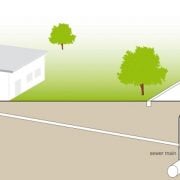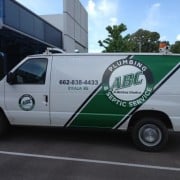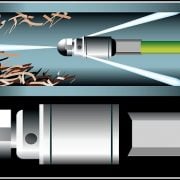How To Locate Sewer Lines
It is important to pinpoint the location of sewer lines within a property, especially when there is need to do some digging. All indoor drainage is connected to a central drainage channel which either ends up in a septic tank within home, or links up with municipal sewer systems. In locating the sewer lines connected to your home, it is important you first identify all drainage lines either in your basement or crawlspace.
So how do you locate them?
Inquire from the person you bought the property from
Ordinarily, this looks like an instant solution but in truth, only a few homeowners bother asking the previous owner of their property of utility details like the location of sewer lines. If you are having trouble getting the contact details of the former owner, you can check it up on municipal tax record. Other than inquiring from the homeowner, you can also find out from your neighbors of the location of sewer lines. The reason for this is that he or she might have noticed where the sewer lines within your home were placed during a maintenance exercise. They may also know the point where yours link up to municipal lines
Find out the location of the septic tank
If your home is one of those that have a septic tank, it is very likely that your sewer line runs out from your basement or crawlspace. The line will bend around big trees and barriers, coming straight from your home and terminating in your septic tank. With this in mind, get hold of a wooden stake with a small diameter, and then prod the ground around where you guess the sewer lines may be. Depending on the particular municipality or the material from which the pipe was made from, depth of pipe burial ranges from 12 to 24 inches.
Consult with the Municipality
You may actually find what you are looking for by paying a visit the municipality office within your locality. Most times, municipalities keep a record of all sewer lines and property maps which can prove useful in locating some utilities. Also, if you can know the exact terminating points of your sewer lines, it makes it easier for you to know points where your sewer lines can’t pass.
Physical digging
If you can find points where your sewer lines passes under your basement, makes it easier for you to know where they won’t pass through. Locate a pipe whose drain you are sure of (maybe the pipe coming from your kitchen or bathroom), and then find where it links up to a bigger pipe. Trace the bigger pipe to the point where it leaves your crawlspace or basement. The pipe which drains away from your basement connects to your sewer line. With this in mind, it makes it easier for you to know the corner of your home in which the sewer lines are buried. You can then proceed to dig up the pipe, as it will give you the direction to the sewer lines around your home.










Leave a Reply
Want to join the discussion?Feel free to contribute!